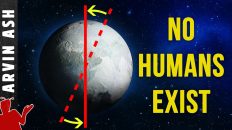Imagine taking a notebook, a plastic bottle, a toaster, and a glass container and burning them in a fire. If the fire was hot enough, all the materials in these 4 things would break down into a gaseous mixture of molecules and atoms.
If you make this fire hotter, all the atoms would break down into their component electrons and neutrons.
If you go hotter still, these particles would break down into the fundamental particles of the standard model, things like quarks and leptons.
And if you go even hotter, we are talking astronomical temperatures around 10^31 degrees or about a million, trillion, trillion degrees Celsius. All the quarks and leptons and the 4 fundamental forces of nature, would break down into one entity – a kind soup where all the fundamental particles and the underlying forces responsible for their behavior would meld into one.
This is what is believed to have existed at the moment of creation, at the moment of the big bang.
All the particles and forces of our reality come from this primordial soup. But this is the story of the 4 fundamental forces of the universe that, as far as is known, control everything in the universe – every movement, every phenomenon, and every process you can possibly think of.
What is the nature of these forces? How do they work? And where did they come from?
According to modern particle theory represented by the standard model of particle physics, all matter is composed of 6 quarks and 6 leptons and their 12 antiparticle pairs.
But that’s not all, matter is subject to 4 fundamental forces that cause this matter to behave in certain ways, and result in essentially every action that you see all around you and everywhere in the universe.
These 4 forces are the strong force which binds the nuclei of atoms by holding protons and neutrons together in their center, the weak force which is responsible for some kinds of radioactivity, electromagnetism responsible for electricity and light, and is also the root cause of chemistry, and finally gravity which binds us to the earth and keeps the planets in their orbits around the sun.
Yet, the most interesting aspect of this picture is that at a fundamental level, scientists believe that all the forces come from one underlying force or principle.
And astonishingly, not only that but according to current understanding, all 24 of the different fundamental particles and the 4 forces are one and the same at some deep level. This is the ultimate symmetry of the universe.
Perhaps the best way to understand this and how these forces emerged is to visualize what happened at the very beginning of time, at the big bang, when everything was one.
Time began not at zero, but at the smallest measurement of time that we can represent by our models of quantum mechanics and that is Planck time. This is not zero but pretty close from our perspective, 10^-43 seconds.
This is not to say that nothing existed prior to this, but it is just the limit of our knowledge. We are ignorant of anything that might have occurred prior to this 1st epoch of existence. So this is aptly called the Planck Epoch.
All the forces and particles were one and the same in a point smaller than the size of a proton. Gravity is thought to have separated from everything else, shortly after this time period. So it was the first force to separate out from the other 3 forces.
The temperatures at this stage of the universe was as you would expect, astronomical – 10^31 degrees Celsius, and the energies were in the range of 10^19 billion or giga electron volts. If we ever develop a theory of everything, then it would explain everything that occurred up to this time. The strings of string theory and the loops of loop quantum gravity, if those theories are correct come into existence and apply here.
The next era, called the Grand Unified epoch lasts from the first Planck second 10^-43 seconds up to about 10^-35 seconds. Up to this period, the remaining three forces, the Strong and weak force and electromagnetism were all unified. But shortly after this period from 10^-34 to about 10^-32 seconds, the strong force separated from the other two – electromagnetism and the weak force, which were united as one force called the electroweak force. Temperatures were now around 10^26 degrees Celsius. And the energy was reduced to 10^15 Giga electron volts.
If we ever discover the grand unified theory or GUT, which unites the strong force with the electroweak force, we would need to model what happens at these energy levels and temperatures.
Somehow this separation of the strong force is thought to have resulted in or powered something called cosmic inflation. This is a momentary expansion of the universe which went from something tinier than the size of a proton to the size of a grapefruit. This is huge increase in size. It is analogous to something as small as a tennis ball becoming the size of the milky way galaxy in a very small instant.
At 10^-12 seconds, called the quark epoch, the electroweak force split into the weak force and electromagnetism. These two now became separate forces. So at this point, all the 4 forces became distinct. The temperature of the universe cooled to 10^15 degrees Celcius, and energies are about 100 GeV. We know a lot about the universe up to this era because such energy levels can be easily modeled in particle accelerators such as the Large Hadron Collider. So our understanding of the electroweak force is fairly robust. The Higgs field exists at this stage – as well. How do we know? because about 100 GeV was needed to create the Higgs boson. And this can be done in the LHC.
And the rest of history brings us to today, 13.8 billion years later, where the average temperature of the universe is -270 degrees C, and energy is on the order of 0.25 eV
Let’s look closer at the 4 forces, and lets start with the two we are most familiar with – gravity and electromagnetism.
They are similar in that their mathematical formulas look nearly identical. Newtons law of universal gravitation can be expressed as the following, F= G Mm/r^2 . were G is Newton’s gravitational constant. Coulomb’s law of electric force between charged bodies can be expressed as F = k Qq/r^2 where k is Coulomb’s constant.
The first formula tell us that the gravitational force between any two bodies is proportional to the product of their masses and inversely proportional to the distance between them squared. Notice that force extends infinitely far. This means that the earth has a gravitational effect not just on the moon and other planets, but also some effect on every other massive object in the universe. Mind you, this is a very small effect because the r in the equation would be very large for things very far away. But it is non zero. And since gravity effects all masses, this effect is the most influential force on a cosmic scale.
But almost everything I just said, also applies to electromagnetism. The electrostatic force between charges extends also infinitely far away. This means that a charged particle on earth has a non zero effect on a charged particle near proxima Centauri, our nearest neighboring star, and charged particles everywhere else in the universe. And this force is much much greater than the force of gravity. In fact the magnitude of electromagnetism is 10^36 times greater than the magnitude of gravity.
So why isn’t electromagnetism the most dominant force in the universe? The reason is because on large scales electric charges of most objects tend to cancel each other out. Large objects tend to be neutral.
So since a charged particle can only affect other charged particles, this force is mostly non-existent at large scales. If large things were not electrically neutral, this force would completely dominate the universe.
But Electromagnetism still has a big influence in our world. It is responsible for the nature of light. And it is the main force responsible for all the biochemistry taking place in our bodies and the rest of the earth. It is the basis of all chemistry.
So now you have ask, if electro magnetism is so strong, then what keeps multiple protons, each of which are positively charged, bound in the nucleus of atoms? According to Coulomb’s law, the two protons in a Helium atom experience a force equal to about 20 lbs.
For something as small as atoms, this is a huge force. They should repel each other and fly apart instantly. The reason that protons and neutrons do not fly apart is because they are kept glued together with a force that is even stronger than electromagnetism – one hundred times stronger. And this force is creatively called the Strong nuclear force. It is the strongest force in the universe.
However, it extends only as far as the width of a proton. Remarkably, it is very small or non existent beyond this length. This has been described as Velcro. When two protons are really close, this force keeps them strongly bound together, but when they are further apart than the width of a proton, it is about non existent.
This force is not simply the opposite of electromagnetism because it is responsible for holding electrically neutral atoms in the center of atoms as well.
Even though this is a force we can’t directly experience, the world has experienced its effect. How?…because you see, the release of this force is the energy behind nuclear bombs. The fission and fusion of atoms releases huge amounts of binding energy from the nucleus of atoms, which results from the strong force. The binding energy of this force, is in fact responsible for most of the mass of any object, not the Higgs Field as you might have thought. And when this binding energy is released, the mass of the atom is converted to energy in nuclear reactions
Then we get to the weak force. This is responsible for a type of radiation called beta radiation, which is the emission of an electron or its antimatter equivalent the positron. One of the most important processes in nature is the beta decay of a neutron. This happens for example when a neutron decays into a proton, an electron and an antineutrino. If this kind of decay did not occur, then the universe would have been awash in a sea of neutrons, and no atoms would have ever formed. And we would not have had life.
This process is also important in making larger atoms stable, because a similar decay, called Beta plus decay a Proton is converted into a Neutron, a positron, and electron neutrino. It results in positron emissions. This process allows for nuclear stability.
Like the strong force this force is also only effective at really small scales, but the range is even shorter than the strong force. It’s effective length is only about one thousandth the diameter of of a proton.
I’ve tried to give you an overall perspective on the 4 fundamental forces. But if you’re like me, you probably have a few questions. First, you might ask, how exactly does a force between particles work? What is the underlying mechanism? What causes an attraction or repulsion? And, why does electromagnetism and gravity have infinite range, but the strong and weak force have such a small range.
The answer to these questions are closely related, and they get into some of the most cutting edge and complex science involving quantum mechanics and particle physics. And this is the subject of part 2 of this video on “How the 4 fundamental forces work.”







